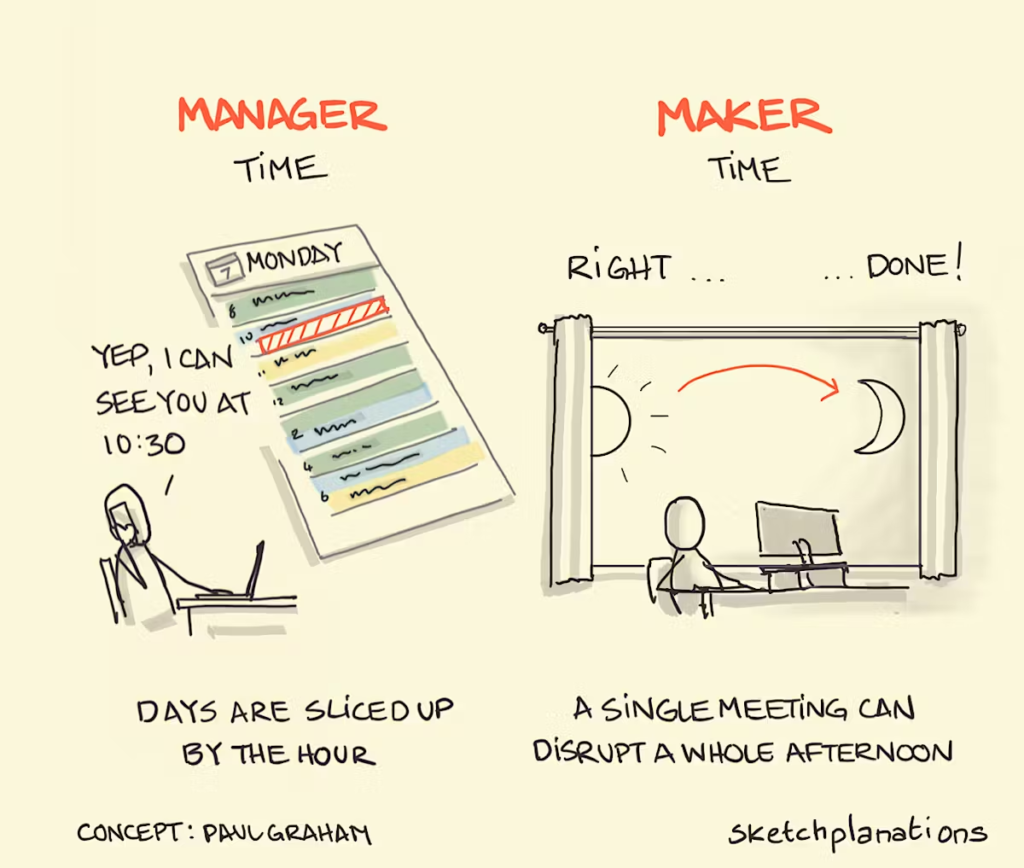How to Improve Productivity at Work: Practical Strategies for Success

Introduction
In today’s competitive and fast-paced world, being productive at work is not just an advantage—it’s a necessity. However, with endless distractions, high workloads, and tight deadlines, maintaining optimal productivity can feel like an uphill battle. Whether you’re an employee, a freelancer, or a manager, knowing how to manage your time, energy, and focus effectively is crucial to staying on top of tasks. This article dives deep into proven methods to improve productivity, from time management techniques to stress management strategies and useful tools that streamline your workflow. Keep reading to unlock strategies that can help you work smarter, not harder—and achieve sustainable results without burning out.
1. Understanding Productivity: What It Means and Why It Matters
At its core, productivity refers to the efficient use of time, resources, and energy to achieve meaningful outcomes. It’s not just about working long hours; it’s about working strategically to complete tasks in the shortest amount of time with minimal effort while maintaining high quality.
In a work environment, productivity determines how well you can meet deadlines, deliver results, and stay ahead of challenges. Companies that foster a culture of productivity tend to enjoy better performance, lower employee turnover, and increased profitability.
The Importance of Productivity at Work

Improved productivity benefits both individuals and organizations. Here’s why it matters:
- For Individuals: Productivity leads to greater job satisfaction, professional growth, and work-life balance. It reduces stress and creates a sense of accomplishment.
- For Organizations: High productivity improves operational efficiency, profitability, and customer satisfaction while reducing unnecessary expenses.
What Productivity Is NOT
It’s essential to understand that productivity doesn’t mean working non-stop or multitasking excessively. In fact, multitasking can reduce efficiency by splitting your focus across multiple tasks, which leads to errors and delays. Productivity is about working smarter, prioritizing tasks that matter, and using your time strategically.
| Key Elements of Productivity | Description |
|---|---|
| Efficiency | Doing things quickly and correctly with minimal waste. |
| Effectiveness | Achieving the desired results without unnecessary effort. |
| Focus | Avoiding distractions to complete tasks within deadlines. |
| Balance | Ensuring high productivity without burning out. |
Understanding these principles lays the foundation for building sustainable habits and routines that enhance your overall productivity.
2. Time Management Techniques for Boosting Productivity
One of the biggest obstacles to productivity is poor time management. Even if you’re motivated to work, inefficient use of time can sabotage your efforts. Fortunately, time management skills can be developed and refined over time with the right techniques.
The Eisenhower Matrix
The Eisenhower Matrix, also known as the Urgent-Important Matrix, helps you categorize tasks based on urgency and importance. It divides tasks into four quadrants:
- Urgent and Important: Tasks that need immediate attention (e.g., project deadlines).
- Important but Not Urgent: Strategic tasks that contribute to long-term goals (e.g., learning new skills).
- Urgent but Not Important: Time-sensitive but low-priority tasks (e.g., non-critical emails).
- Not Urgent or Important: Tasks that offer little value (e.g., unnecessary meetings).
Using this framework ensures you spend more time on activities that align with your goals, rather than reacting to every minor distraction.
Pomodoro Technique
The Pomodoro Technique is a simple but effective method that helps maintain focus. Here’s how it works:
- Choose a task you want to work on.
- Set a timer for 25 minutes and work without interruption.
- Take a 5-minute break when the timer rings.
- After four Pomodoros (work intervals), take a longer break of 15-30 minutes.
This method prevents burnout, encourages focus, and ensures you take frequent breaks to recharge.
| Technique | How It Helps Productivity |
|---|---|
| Eisenhower Matrix | Prioritizes tasks effectively. |
| Pomodoro | Breaks work into manageable intervals. |
| Time Blocking | Allocates specific time for tasks to avoid distractions. |
3. Tools and Technologies That Maximize Productivity
Technology plays a crucial role in increasing productivity by automating tasks, improving organization, and reducing distractions. The right tools can streamline workflows, making it easier to stay organized and on track. Below are some of the most effective productivity tools available today.
Task Management Tools
- Trello and Asana: Both platforms offer powerful project management solutions that allow teams to assign tasks, track progress, and collaborate efficiently.
- Todoist: A simple yet effective task management app that helps users prioritize their daily to-do lists.
Time Tracking Tools
- RescueTime: Monitors your activity and provides detailed reports on how you spend your time online, helping you identify and eliminate distractions.
- Toggl: A time-tracking tool that enables users to monitor how long they spend on tasks and projects.
Communication and Collaboration Tools
- Slack: A messaging platform that helps streamline communication within teams.
- Google Workspace: Includes tools like Google Calendar, Docs, and Drive to enhance productivity through seamless collaboration.
| Category | Tool Examples | How It Helps |
|---|---|---|
| Task Management | Trello, Asana, Todoist | Keeps projects organized and on track |
| Time Tracking | RescueTime, Toggl | Tracks time spent on tasks |
| Collaboration | Slack, Google Workspace | Enhances team communication |
These tools enable better workflow management and help prevent inefficiencies that often arise in team environments.
4. Managing Stress and Avoiding Burnout for Sustainable Productivity
High productivity is only sustainable when you strike a healthy balance between work and rest. Stress and burnout are common pitfalls, especially in fast-paced environments. Chronic stress reduces concentration, creativity, and motivation, ultimately leading to lower productivity.
The Impact of Stress on Productivity
When stress is left unchecked, it can manifest in several ways:
- Reduced Focus: Stress triggers the fight-or-flight response, making it harder to concentrate.
- Decreased Motivation: Prolonged stress leads to mental fatigue, sapping enthusiasm for work.
- Increased Errors: Stress often causes mistakes that could be avoided with a calmer mindset.
How to Manage Stress Effectively
- Take Regular Breaks: Studies show that taking short breaks can improve mental clarity and prevent burnout.
- Practice Mindfulness and Meditation: These techniques help reduce stress and improve focus by grounding you in the present moment.
- Exercise and Healthy Diet: Regular exercise releases endorphins, which boost mood and reduce stress. Eating nutrient-rich foods enhances cognitive function.
| Stress Management Strategy | Benefit |
|---|---|
| Mindfulness Meditation | Increases focus and reduces anxiety. |
| Exercise | Boosts energy and improves brain health. |
| Healthy Eating | Enhances cognitive performance. |
5. Building Productive Habits for Long-Term Success

Productivity isn’t just about using tools or following techniques—it’s about building consistent habits that become second nature over time. The following strategies will help you create routines that promote sustained productivity.
The Power of Habit Stacking
Habit stacking is a technique where you link a new habit to an existing one, making it easier to adopt. For example, if you want to start journaling, you could do it right after brushing your teeth in the morning.
Morning Routines for Productivity
Starting your day with a well-structured routine sets a positive tone for the rest of the day. Many highly productive people follow a morning routine that includes activities such as meditation, exercise, and planning their day.
Reflection and Continuous Improvement
At the end of each day, reflect on what you accomplished and identify areas for improvement. Continuous reflection helps you stay aware of your progress and adjust your strategies as needed.
6. Conclusion: Achieve More by Working Smarter, Not Harder
In a world where time is a limited resource, improving productivity requires intentional effort. By applying time management techniques such as the Eisenhower Matrix and Pomodoro Method, using productivity-enhancing tools, and managing stress effectively, you can maximize your efficiency without compromising your well-being.
The key to long-term success lies in building sustainable habits—those that become an automatic part of your routine. Whether you’re working individually or as part of a team, following these strategies will enable you to achieve your goals efficiently and maintain a healthy work-life balance.
Remember, productivity isn’t about doing everything—it’s about doing the right things well. Start implementing these strategies today and watch your productivity soar!




